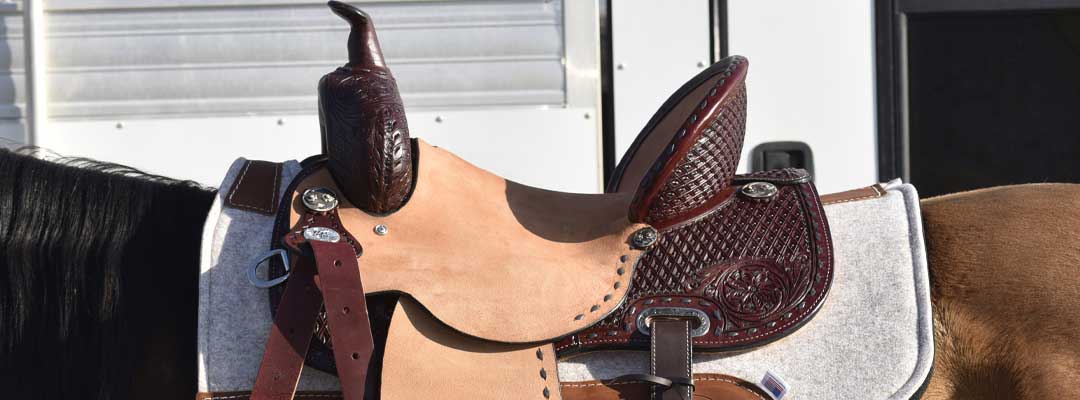
Curious what the differences are between the types of Western saddles produced?
Whether you’re running barrels, chasing calves, trail riding or showing in an arena, there are different Western saddles made for your specific riding discipline. Learn what makes each type of Western saddle unique, with insights from our friends, Circle Y. Have more questions? Call or email our Valley Vet Supply saddle experts at saddles@valleyvet.com, and they are more than glad to help!
Trail saddles- Specifically designed for comfort and security, these saddles often have a padded, deeper seat and are lighter weight. These saddles will often have many saddle strings hanging off as well, used to tie jackets and gear to during the trail.
Show saddles and Trainer saddles - When riding any of the all-around events, such as western pleasure or horsemanship, riders will often have a show saddle equipped with tooling in the leather, silver and bling. These saddles will have a shorter horn, a low cantle, and a fairly flat seat that often times has a balance point in the center for proper riding position.
Barrel saddles- These saddles are very lightweight. They often have a skinny, tall horn to allow for easy grip and have a deep seat to keep the rider secure at high speeds. These saddles often have rough-out seats, seat jockeys, and fenders for grip and shorter skirts to avoid interference with the horse’s hip in sharp turns.
Reining saddles - These saddles have a medium-height horn, often times have cutout skirts to allow for better leg contact, and are medium to heavy in weight. These saddles have a front cinch only and may have added silver on them for show.
Cutting saddles - These saddles have a distinctive tall, narrow horn for easy gripping with the hand, and a long, flat, smooth seat allowing no rider interference to the horse. These saddles will have both a front and rear cinch and often times, rough-out fenders for better grip.
Roping saddles - Roping saddles are a heavier, sturdier saddle with a reinforced wood tree made to withstand ranch work and roping. The horn is often thick and wrapped to help it withstand the weight of a rope on a calf. These saddles almost always have both a front and rear cinch to keep the saddle from rocking forward when a calf is roped. Roping saddles also have wider, bigger stirrups.
Shop Valley Vet Supply’s wide selection of saddles and tack available, and for more information, please contact saddles@valleyvet.com.
Additional resources:
- Saddle Fit Tips for Your Western Saddle: Q&A with Circle Y
- Western Saddle Fitting 101: Tips on Proper Fit, Selecting Saddle Pads, Cinches and More
- 5 Western Saddle Q&As
All photographs and images courtesy of Valley Vet.
This article originally appeared on Valley Vet and is published here with permission. Valley Vet Supply was founded in 1985 by veterinarians for people just like you - people who want the very best for their four-legged friends and livestock.
There are more informative articles in our section on Health & Education.

































